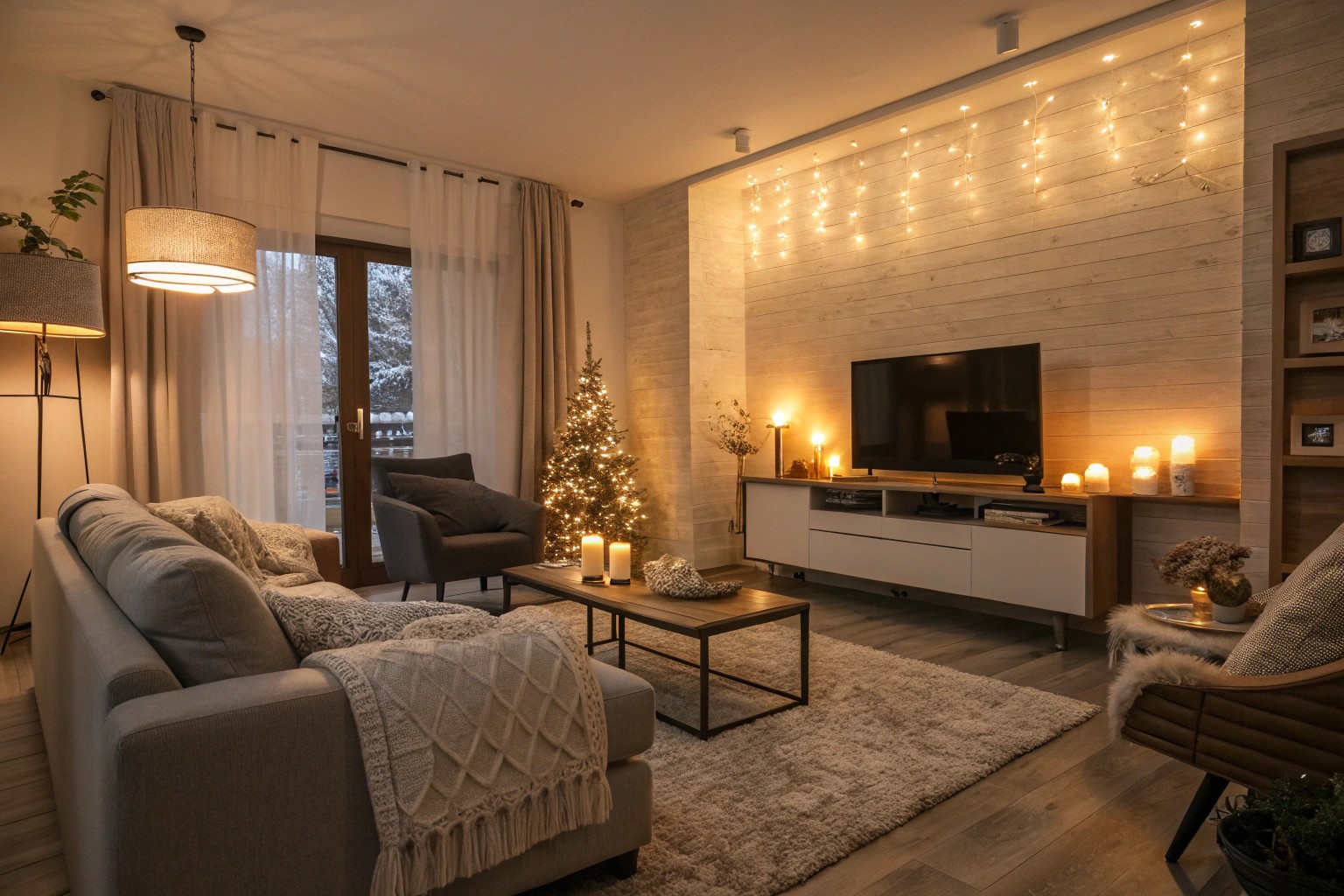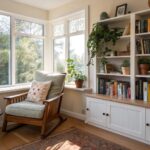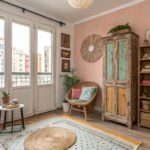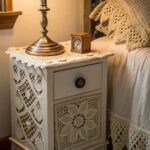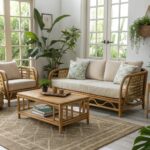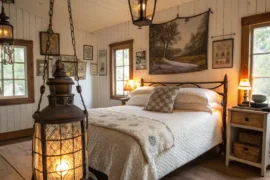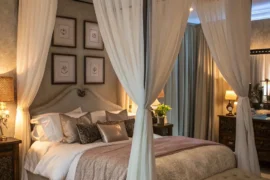When the doorbell unexpectedly rings, there’s that moment of panic as you scan your living space through the eyes of your soon-to-arrive guests. After designing homes for over a decade, I’ve learned that true hospitality isn’t about perfection—it’s about creating spaces that can transition from lived-in to welcoming in minutes. The art of the 15-minute transformation is something you can master with the right preparation and mindset.
The Psychology of Quick-Ready Spaces
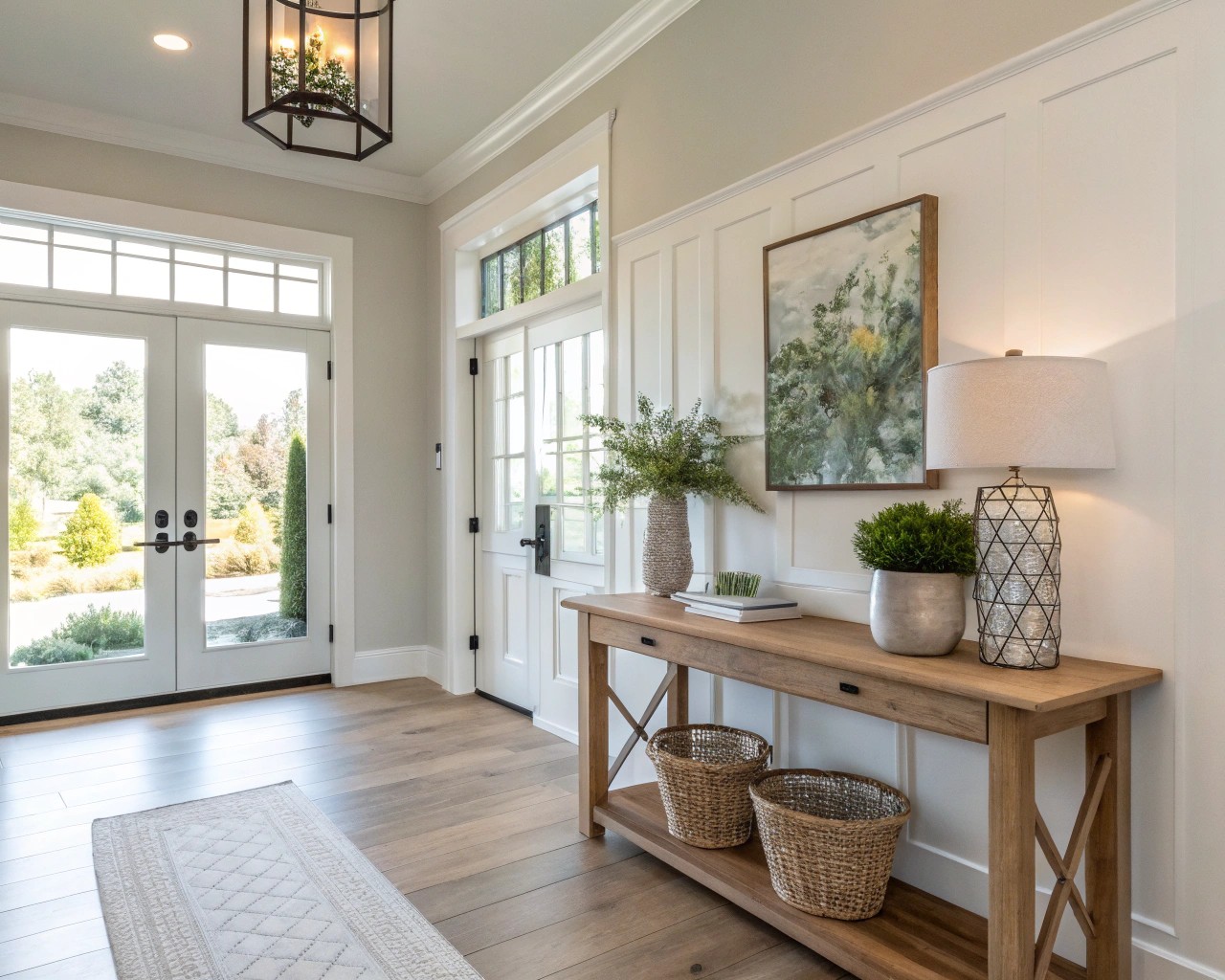
The most guest-friendly homes aren’t necessarily the most pristine—they’re the most adaptable. When designing for clients who entertain frequently, we focus on creating what I call “flexible hospitality zones”—areas that can quickly pivot from everyday use to guest-ready status.
Consider the experience of a Boston family, known for their frequent impromptu gatherings. Interior designer Julia Buckingham highlighted how their entryway was transformed into a visual invitation through the use of artful accents and materials, effectively infusing life and interest into the space upon arrival.
You want guests to feel the warmth of your home without being distracted by its inevitable lived-in elements. This balance requires strategic design choices and quick-action plans.
The 15-Minute Transformation Blueprint
Minute 0-3: Strategic Decluttering
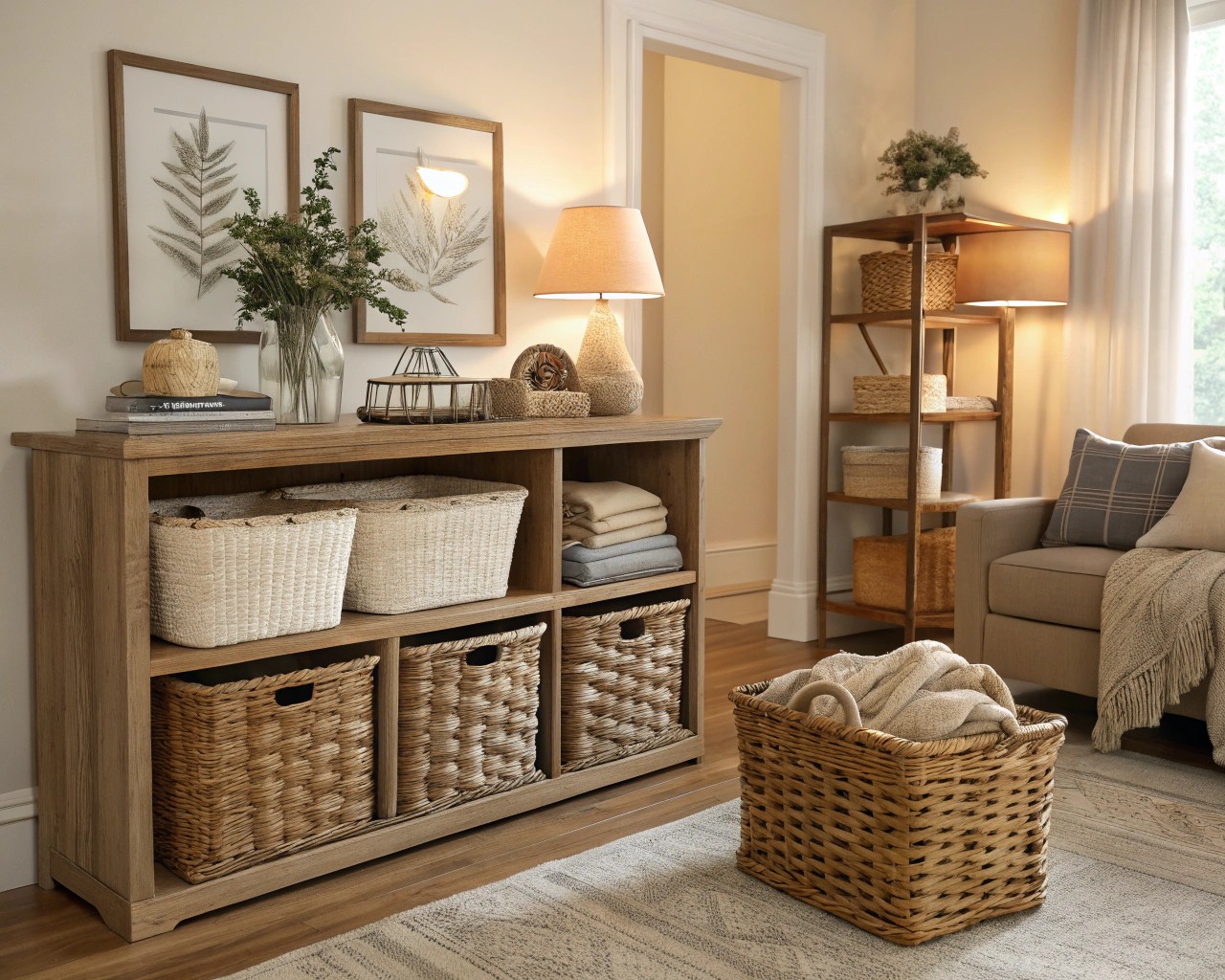
The first three minutes are all about quick visual clearing. Set a timer and turn off distractions—working against the clock keeps you motivated.
The Basket Method:
1. Place empty baskets or boxes in key rooms
2. Quickly gather stray items from visible surfaces
3. Move filled containers to a designated “hide spot” (closet or spare room)
4. Close the door—deal with sorting later
I always tell clients that this isn’t about avoiding cleanup—it’s about prioritizing your attention when time is limited. You’d be amazed how transformative this three-minute sweep can be for changing the entire feeling of your space.
Minute 4-7: Bathroom Refresh

Your bathroom will likely be visited, so a quick refresh here is essential. Dedicate three minutes to:
- Wipe down sink and countertop
- Check and replenish toilet paper
- Put out fresh hand towels (consider festive ones for seasonal flair)
- Quick toilet check and clean if necessary
- Add a subtle scent element (candle or diffuser)
For extra polish, I recommend keeping a small basket of toiletries that can be quickly placed out for guests. As one B&B owner notes, offering small conveniences like travel-sized toiletries or sample packets shows thoughtful hospitality; “The gesture is what matters.”
Minute 8-11: Living Area Enhancement
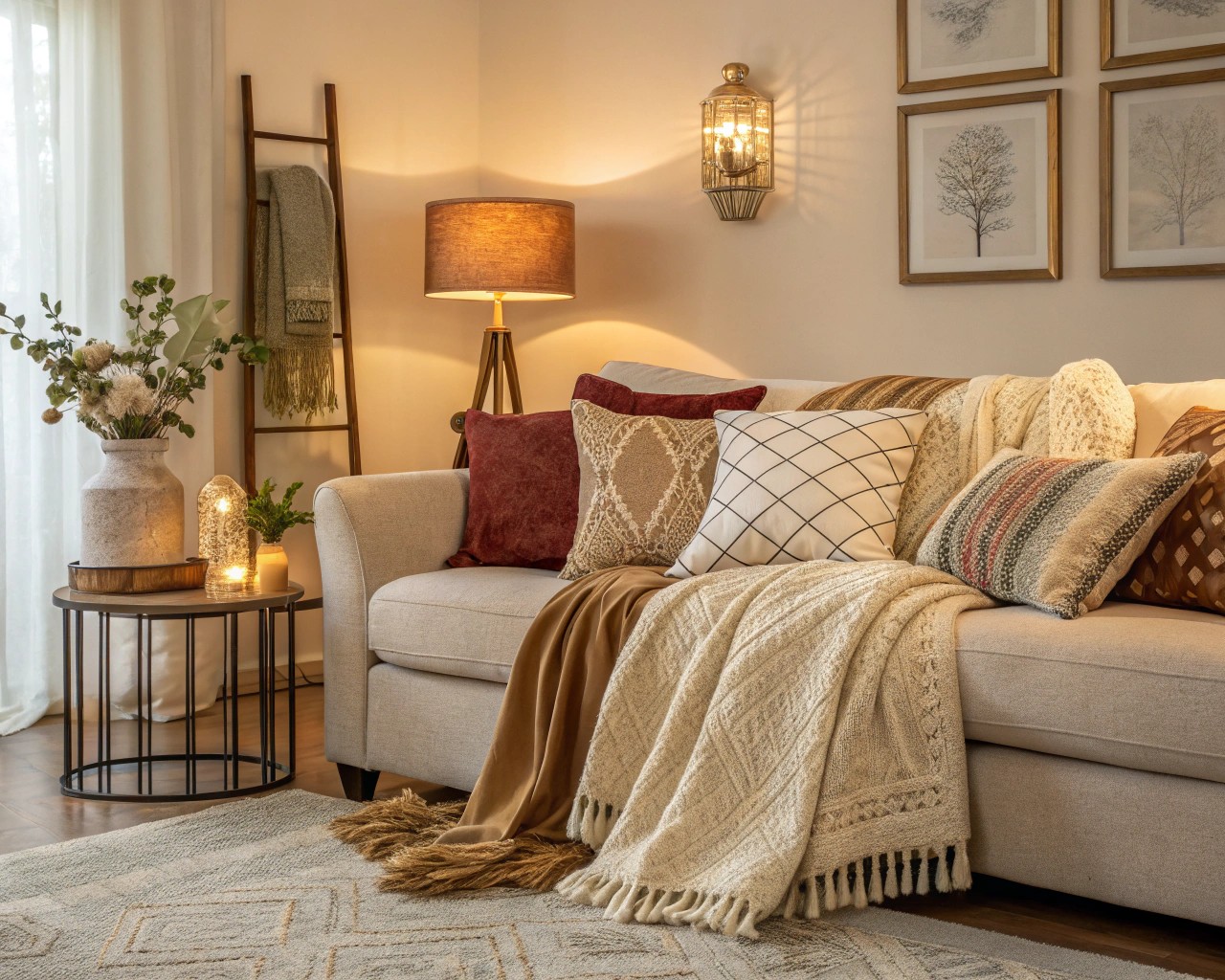
The living room is where guests will spend most of their time. Focus on:
- Fluff and straighten cushions and throw pillows
- Fold and drape any throw blankets artfully
- Clear coffee tables (except for deliberate decorative elements)
- Adjust lighting for a warm, welcoming atmosphere
“Working with clients in Manhattan, I’ve found that lighting is the quickest way to transform a space,” I tell my clients. “Switching on table lamps rather than overhead lights instantly creates intimacy and warmth, even when there’s been no time for other preparations.”
Minute 12-15: Final Impressions & Refreshments
Use your final minutes to create that special welcome feeling:
- Put drinks or a bottle of wine in the refrigerator
- Set out simple glasses on a tray or countertop
- Consider a quick bowl of nuts or crackers if available
- Adjust room temperature for comfort
- Put on background music if time allows
A client project in Chicago illustrates the power of first impressions: her entryway utilized herringbone flooring, high-gloss white trim, and coordinating chandeliers to unite the spaces and create an impactful welcome. While you can’t make structural changes in 15 minutes, you can ensure entry spaces are clear and welcoming.
Design Strategies for Permanently Semi-Guest-Ready Homes
When we design homes, creating spaces that can quickly transition for guests involves strategic choices in layout, furniture, and storage. Here’s how to incorporate these principles in your home:
Multi-Purpose Furniture Selection
| Furniture Type | Guest-Ready Feature | Everyday Function |
|---|---|---|
| Ottoman with Storage | Quick clutter concealment | Footrest and extra seating |
| Sofa Bed or Daybed | Overnight guest accommodation | Comfortable everyday seating |
| Nested Side Tables | Expandable surface area for gatherings | Space-saving when not needed |
| Folding Dining Chairs | Extra seating for unexpected guests | Stored away when not in use |
| Console Table with Drawers | Entry surface for guest items | Hidden storage for everyday items |
Design experts often advise maximizing space with multifunctional furniture. This approach allows you to maintain style while ensuring your home is always ready to adapt, blending everyday utility with guest-readiness.
The Power of Designated Hide Spots
We’ve all been there—the frantic dash to clear clutter when the doorbell rings. The solution is creating designated hide spots throughout your home:
- Entryway: A bench or cabinet with hidden storage for shoes and bags
- Living Room: Decorative boxes on shelves that can quickly contain remote controls and small items
- Dining Area: A sideboard where table clutter can be swept away temporarily
- Bathroom: Cabinet space specifically reserved for everyday items that need concealing
Consider the flow between rooms. Designer Philip Gorrivan emphasizes creating distinct narratives for each space while ensuring they communicate cohesively, drawing visitors naturally through the home. Thoughtful transitions are key to this welcoming effect.
Room-by-Room 15-Minute Refresh Guide
Entryway Essentials
Your entry creates the first impression. Keep a basket handy for quick decluttering and ensure good lighting. Experts agree that a welcoming entrance is crucial. Ensure it’s clean and well-lit; simple touches like a welcome mat or a beautiful houseplant can make guests feel instantly at ease.
Bathroom Brilliance
Keep guest towels rolled hotel-style in a basket for instant elegance. Preparing details like this ahead of time ensures your guest bathroom maintains a polished look. Stock a small cabinet with guest essentials that can be quickly deployed.
Living Room Logistics
The living area should invite conversation and comfort. For example, a project in a Parisian apartment used a large, plush sectional for ample seating against deep charcoal walls to foster intimacy. Consider how your furniture arrangement facilitates natural gathering and conversation flow.
Bedroom Basics
If you have a dedicated guest room or space where overnight visitors stay, maintain it in a semi-ready state:
- Keep fresh linens in the closet ready to deploy
- Provide a small basket with essentials (water carafe, tissues)
- Ensure there’s empty drawer space or hanging space for clothes
- Add thoughtful touches like a reading lamp and books
Furniture experts often highlight the bed as the centerpiece of any guest room. Investing in a quality bed frame and mattress is key to ensuring your guests get a good night’s sleep.
The 80/20 Approach to Maintained Readiness
After working with countless clients on this very challenge, I’ve developed what I call the “80/20 readiness rule”: Maintain your home at 80% guest-ready status at all times, leaving just 20% of the work for those 15-minute transformations.
This approach focuses on:
- Regular quick-cleaning routines (15 minutes daily rather than hours weekly)
- Strategic storage solutions throughout the home
- Investing in quality basics that look good with minimal fussing
- Keeping consumables stocked (toilet paper, hand soap, simple refreshments)
Echoing sentiments from designers like Philip Gorrivan, strive for a home where every room has its own identity yet connects harmoniously with the others. This cohesive approach makes quick transformations feel more natural and seamless.

